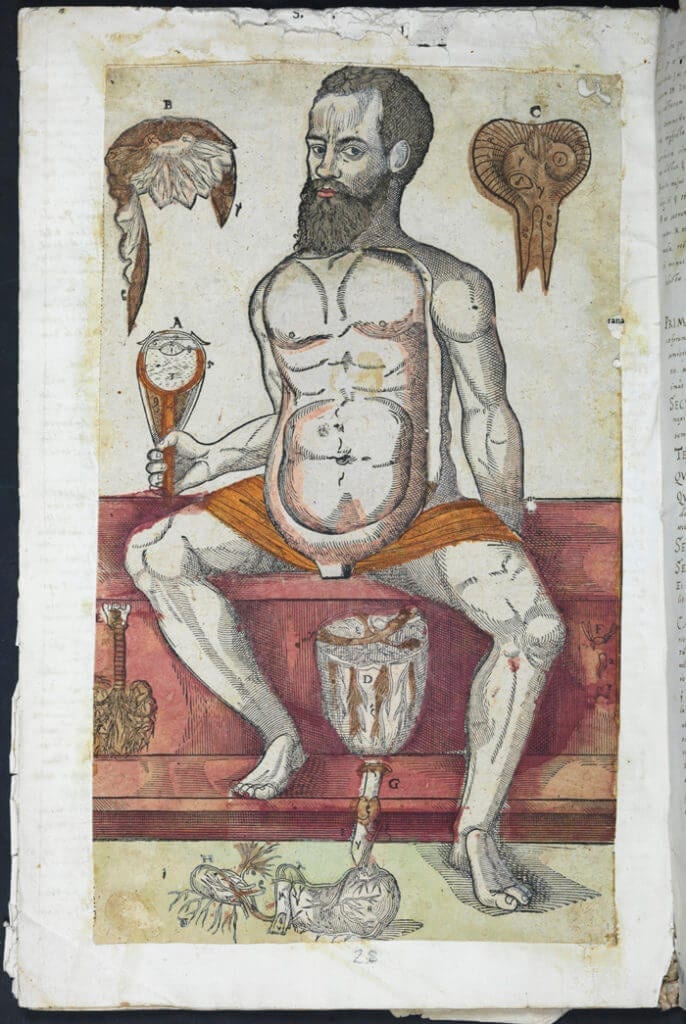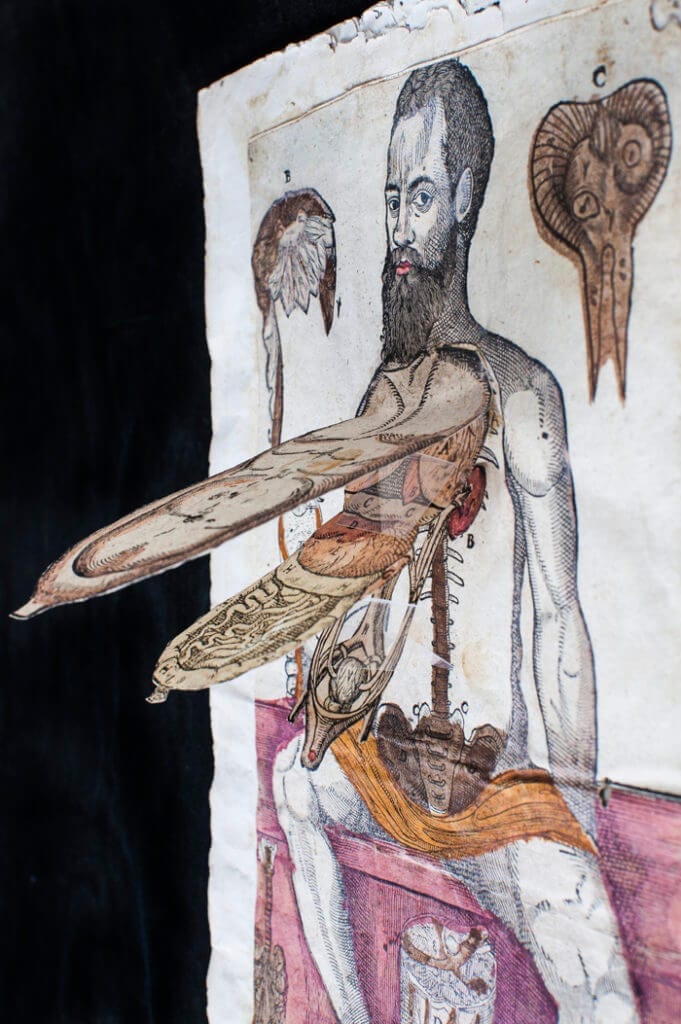Anna Lantz
Stockholm, Sweden

The sheet is cut down lacking the
descriptive text surrounding the figure
Hagströmer Library, Karolinska Institutet

Hand-coloured woodcut
with three moveable flaps
Hagströmer Library, Karolinska Institutet
At the end of the 1530s, loose-leaf anatomical pop-ups began to appear in Germany. The idea quickly caught on and soon spread to other European cities. Normally these anatomical fugitive sheets were sold in pairs and represented a seated man and woman surrounded by a short Latin or vernacular text giving the name and function of the various organs. In this unusual example, printed at some time in the 1570s or 1580s, the man’s face bears the features of the famous anatomist Andreas Vesalius (1514–1564).
References
- Carlino, Andrea. Paper Bodies: A Catalogue of Anatomical Fugitive Sheets 1538-1687 (London, 1999).
- Photo: Magnus Hjalmarsson.
ANNA LANTZ, MA in art history, is Curator of Rare Books and Prints at the Hagströmer Medico-Historical Library, Karolinska Institutet in Stockholm.
Highlighted in Frontispiece Volume 8, Issue 1 – Winter 2016

Leave a Reply